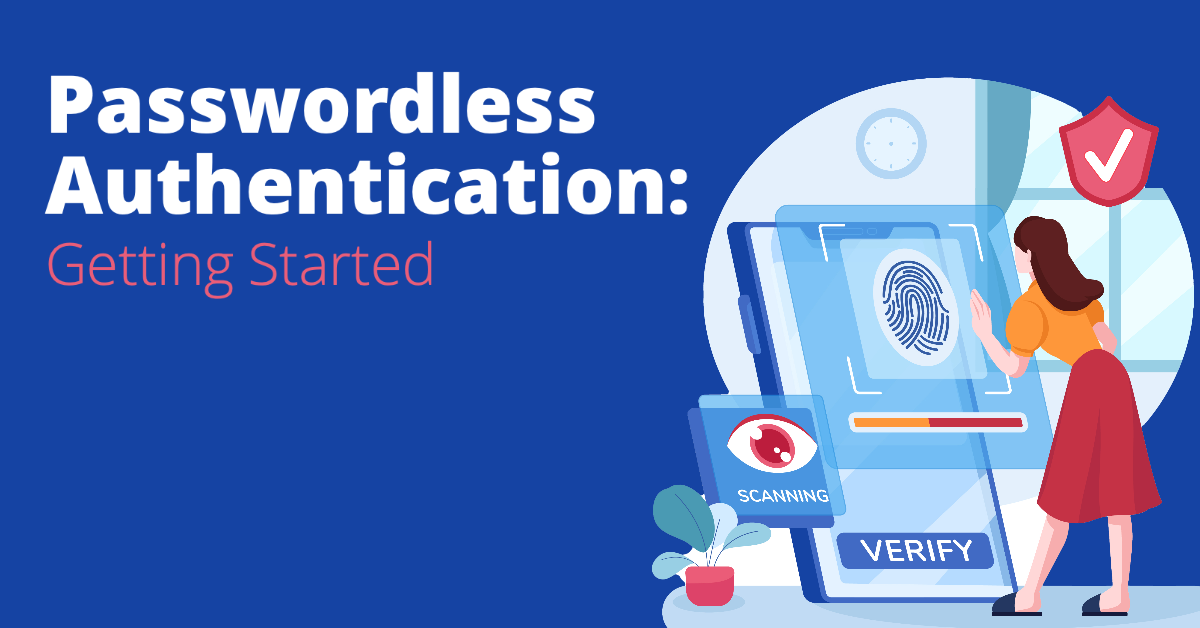Passwords pose a major security risk to your organization. Even though most of us have always been taught to create complex and strong passwords, that doesn’t eliminate the threat of them getting guessed, stolen, or hacked.
As cyber criminals get more advanced in their tactics, the ways in which we protect our accounts must advance as well.
Microsoft’s passwordless authentication is a relatively new idea that some users may be hesitant to try, due to the fact that it sounds a little odd to have no password in place. However, this new sign-in method can give your business confidence that your data is protected and that your systems are equipped with the most up-to-date security infrastructure.

Why are passwords out?
Traditional passwords are the easiest factor for cyber criminals to seize. For accounts that solely rely on a single password for security purposes, your organization’s data is put at major risk should that password be compromised.
There are a few different routes that hackers can take to steal your password, including:
- Guessing – Passwords can be hard to keep up with, so often times users will create them to be common, simple, and easy to remember. But, that gives hackers the ability to easily guess what they may be.
- Social engineering – Hackers can trick users into giving up sensitive information by masquerading themselves as a known or trusted source. The email you receive may look legitimate, when really it’s a malicious one just waiting to be clicked.
- Malware – If you fall victim to a scam and your device gets infected with malware, hackers can use that access to their advantage. Whether it’s screen recorders, key loggers, or another method – malware can quickly leave your passwords vulnerable.
- Public Access – While being able to work from anywhere is nice, it does mean that you have to be more cautious when logging in to confidential accounts. Using public wi-fi (instead of a secure VPN) to log in to your accounts can leave you vulnerable to a hacker intercepting and stealing that password.
With all of these risks being directly associated with a password, security professionals came up with a way to avoid them completely: cue, passwordless authentication.
How it works:
You may be wondering, “how can my data possibly be more secure if I don’t even have to enter a password to access it?” Let’s look at how this process works.
Rather than using a single password to verify a user’s identity, passwordless authentication uses something you are (biometrics like fingerprints or retina scans) or something you have (hardware tokens or one-time PINs).
When it comes to your Microsoft account, there are a few different ways you can implement this new sign-in alternative:
- The Microsoft Authenticator App allows you to sign in using your fingerprint, face recognition, or PIN.
- Windows Hello is also a way to use biometrics or a PIN to gain access.
- Security keys are physical devices that can be used as replacements for usernames or passwords (e.g., USBs or your mobile device).
Using these alternatives to a traditional password makes it extremely difficult for a hacker to access your account, seeing as how the personal elements of the authentication process cannot easily be replicated.

It’s Still Important to be Cautious
With all of that being said, it’s still important to be cautious when accessing secure data. Unfortunately, we can never be completely immune to a cyber-attack, as there is no authentication method out there that can’t possibly be hacked.
However, passwordless authentication provides a much safer and harder-to-crack alternative than your conventional passwords. The amount of time and effort needed to infiltrate a passwordless system by far passes that of using passwords and is much less likely to occur.
If you’re using an account that requires you to have a password rather than an alternative option, here are a few tips for making sure your password is strong and reliable.
Keep your data secure!
The need for robust and up-to-date cybersecurity tools is constantly increasing as cybercriminals continue to intensify the number and scale of attacks.
Implementing Microsoft’s passwordless authentication can help save your organization valuable time and resources, while also keeping it simple for users to quickly access what they need.
For more information, check out the resources below:
Dark Reading’s, “Going Passwordless? Here Are 6 Steps to Get Started”
Microsoft’s, “How to go passwordless with your Microsoft Account”


